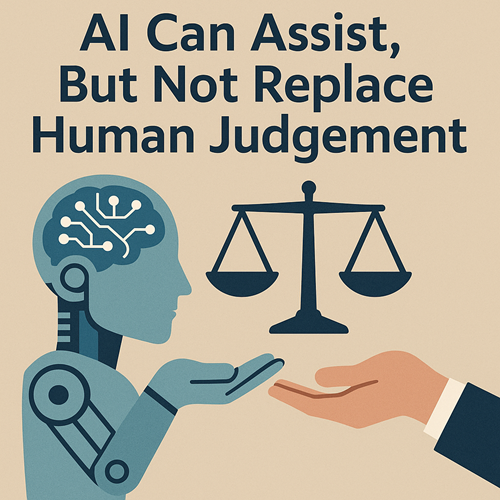In recent years, Artificial Intelligence (AI) has made its way into the heart of the professional world, becoming a powerful tool across industries—from healthcare to finance and, increasingly, the legal profession. Yet, as its presence grows, so too do the risks of misusing it.
One alarming case recently brought the issue into the spotlight: a lawyer submitted a court document that cited rulings that didn’t exist—fabrications generated by an AI tool. This wasn’t a simple mistake; it was a clear warning sign of what can go wrong when we trust AI too much, too quickly, and without the proper checks.
The Allure and the Pitfalls
AI tools can be genuinely transformative. In the legal world, they streamline time-consuming tasks: scanning vast databases of case law, drafting preliminary documents, translating legal texts, and even identifying problematic clauses in contracts. Used wisely, they free up professionals to focus on higher-order strategic work.
But these tools are not perfect. One of the biggest concerns is what experts call “AI hallucinations”—confident, well-written, and completely incorrect outputs. AI doesn’t “know” facts in the way humans do. It identifies patterns and statistically likely answers based on its training data. So, if something sounds plausible, it might generate it—even if it’s entirely fictional.

According to Dr Eyal Brook, a partner and head of AI at S. Horowitz & Co. law firm, the key is using AI as a professional assistant, not a replacement. “AI shouldn’t provide final legal opinions, interpret complex laws, or offer strategic legal advice without human review,” he explains.
Indeed, the role of the lawyer isn’t just to process data—it’s to interpret meaning, apply context, and weigh implications. AI can’t do that.
Legal and Ethical Risks
Beyond factual errors, AI raises serious concerns around privacy, confidentiality, and professional liability. Sensitive legal documents passed through AI tools may expose client information or end up training the model if not used securely. There’s also the issue of bias—AI can unintentionally reflect and amplify societal inequalities present in its training data.
That’s why professional bodies have begun issuing official guidance on responsible AI use in law.
Best Practices for Responsible AI Use
So how can legal professionals—and professionals more broadly—use AI safely and effectively?
Define what kind of information can be fed into AI systems. Sensitive data should be kept out, and output must always be verified before use.
Ensure everyone understands AI’s limitations, including the risk of hallucinations. Emphasise that humans are responsible for any content AI produces.
Opt for trusted, locally hosted (on-prem) or private models that don’t store or learn from your data.
Begin with low-risk applications like drafting routine communications or summarising non-critical information.
Every AI-generated output must be checked by a qualified person before it’s used or submitted.
Keep AI policies current with technological advancements and evolving regulations.
A Tool, Not a Threat
As Yossi Hershko, Global CTO at Dun & Bradstreet, puts it: “AI gives answers, but only humans understand meaning.” Business strategy, legal interpretation, and ethical judgement aren’t tasks we can delegate to a machine.
AI isn’t here to replace professionals—but it can help us work smarter if used with care. As long as we stay vigilant, AI can be a force for good, enhancing productivity and uncovering insights that would otherwise go unnoticed.
The future of AI in law and business isn’t about blind trust—it’s about smart caution, clear boundaries, and responsible implementation.
#AILegal #LegalTech #ArtificialIntelligence #LawFirm #LegalInnovation #ResponsibleAI #AIethics #FutureOfLaw #LegalProfession TechInLaw #LegalAI #SmartCaution #DigitalTransformation #LawAndTech #LegalRisk #HumanInTheLoop